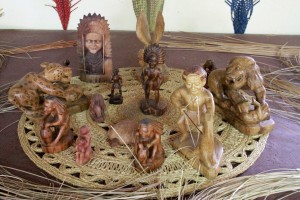Recently wrapped edit on Episode #1 (Ep. 901) of Season 9, premiering in October 2021. Here’s a sneak peek of Dubrovnik, Croatia.
Sneak Peek Episode 901
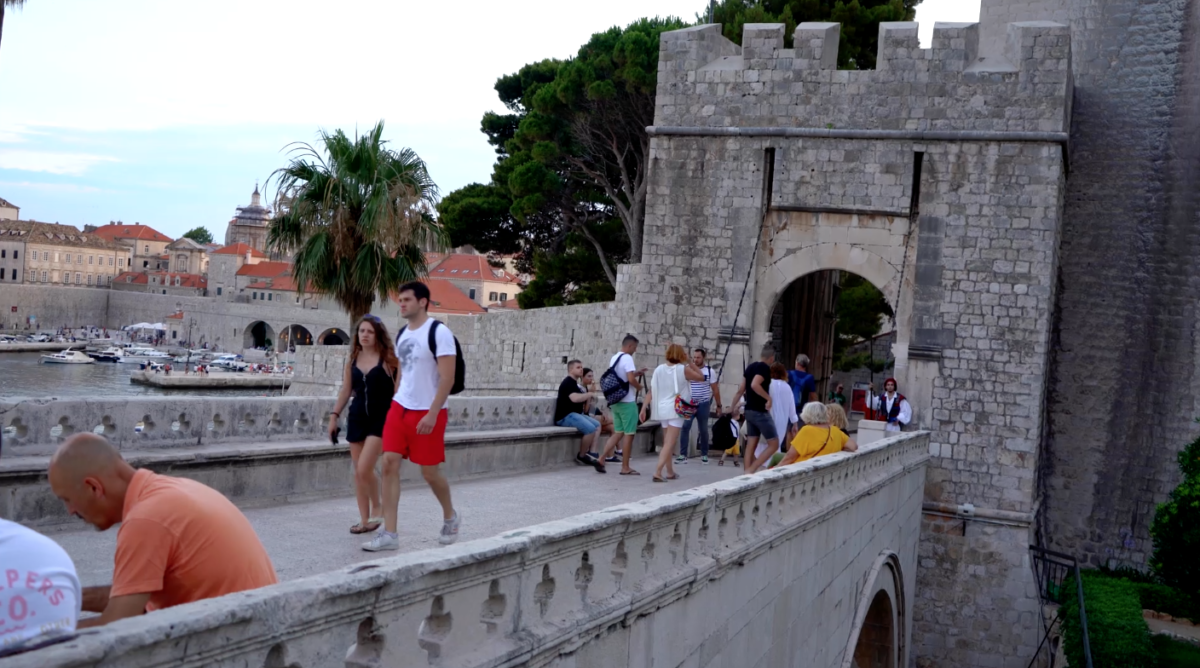

Recently wrapped edit on Episode #1 (Ep. 901) of Season 9, premiering in October 2021. Here’s a sneak peek of Dubrovnik, Croatia.
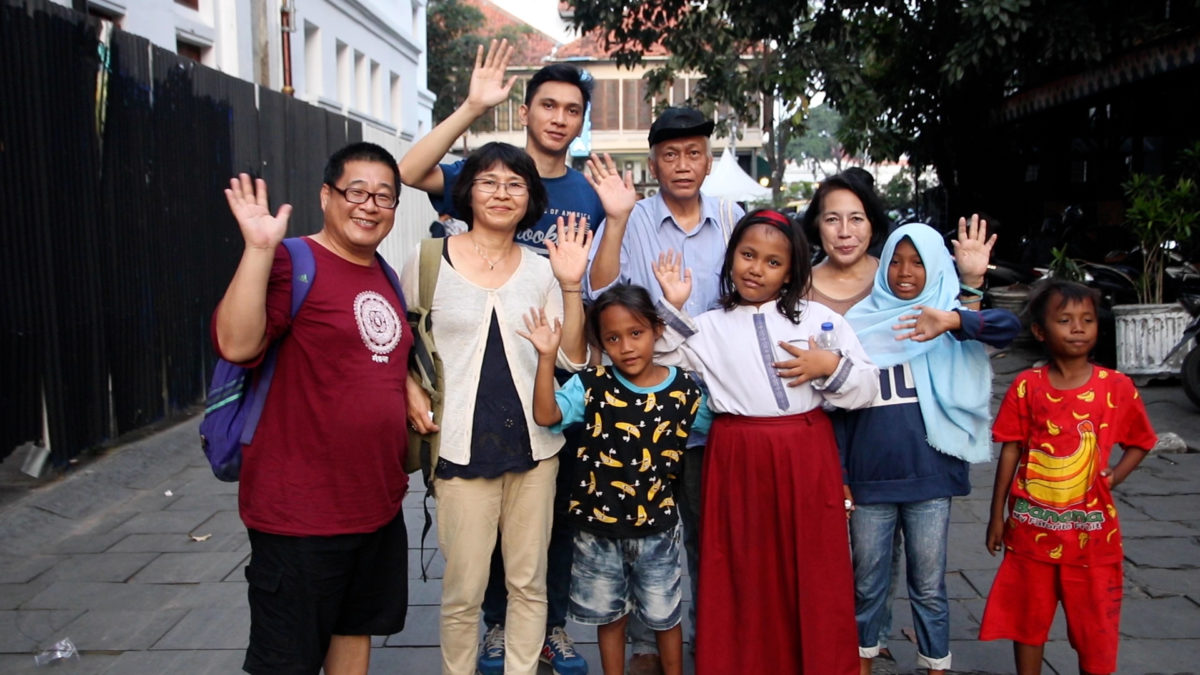
I love to travel because it jolts me out of that dull and unfulfilling zone and into a “wow” zone. And one reason I love giving back is how good it feels to take the focus off of me and onto someone else. Giving back is one of the most selfish things that one can do. What a lovely way to be selfish?
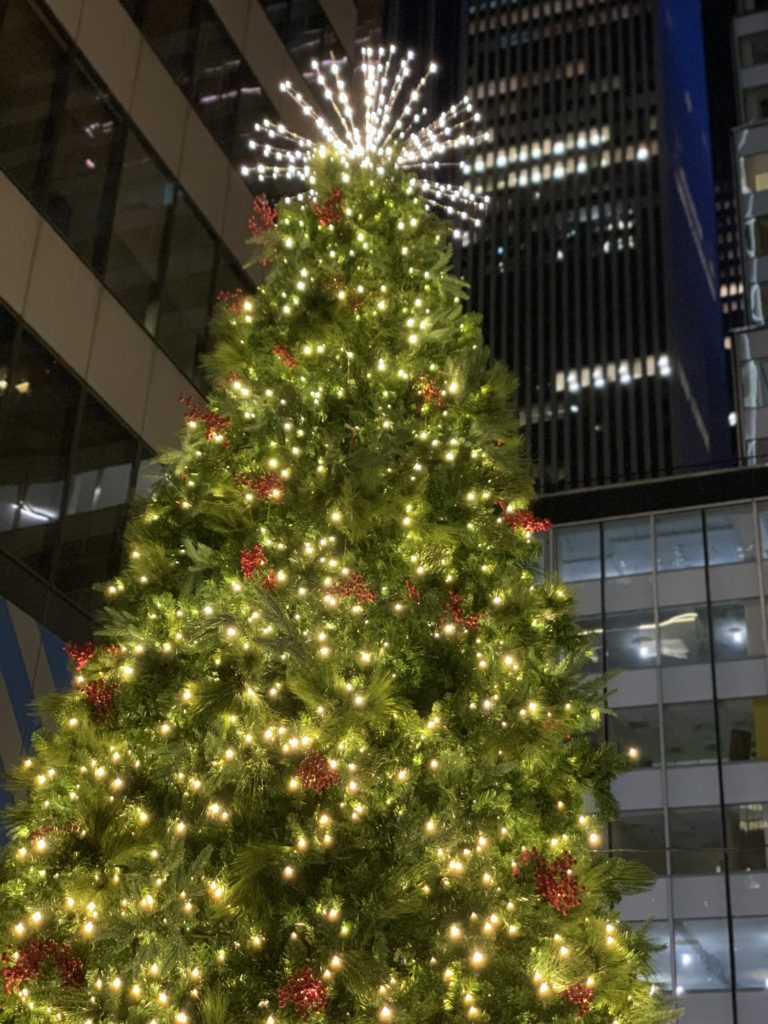
2020 has not been kind to travel, but it has opened the door to giving. Even in the world’s wealthiest nation (the US), people are suffering. But imagine the pain being felt in places suffering long before Covid 19 made it’s grand and morbid entrance.
As the 2020 holiday season limps along, it would be nice to shift away from a culture that discounts humans as consumers and allows us to humanize our neighbors once again.
On Raw Travel, we’ve profiled dozens of organizations doing good things in their little corner or chosen field of the world. I thought I’d list a few recent ones for you if you wanted to give to them in someone’s name as a gift this year. We’ve featured dozens, and there are so many more deserving than on this small list of five. But, since there are just five days of giving left before Christmas, I thought I’d limit the list to five. However, if you remember a particular “Give Back” that touched your heart and you’d like to give back in some way, please reach out on social media or email at RawTravel@aimtvgroup.com. We’ll try to hook you up with the best way to give.
This should probably go without saying, but obviously, any day is an excellent day to give back. Be it a birthday, holiday, or just a plain old vanilla Monday, giving can always make the routine day a joyous occasion. Merry Christmas and Happy Holidays!

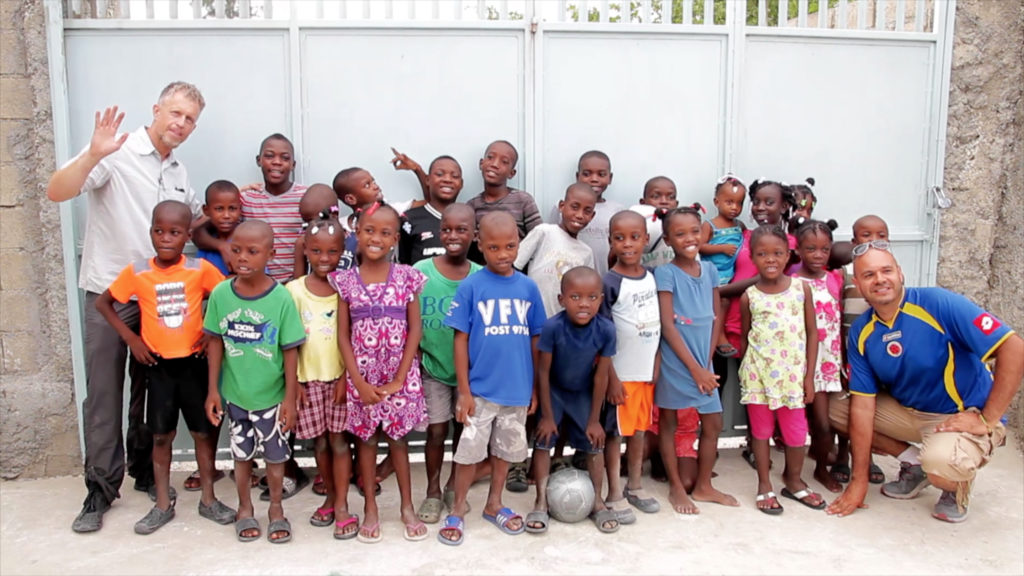
2) FREEDOM HOUSE HAITI – You may recall our visit to Haiti and our work with Freedom House, an organization rescuing orphaned restaveks (child slaves) and raising them in a loving and caring environment. We’ve helped this organization raise money over the years. This year you can help by visiting their new fair-trade gift site at www.BeautifullyMadeFairTrade.com . Freedom House’s USA main office is based in East Tennessee. Tennessee residents can take advantage of free 24-hour front porch pickup in Maryville, TN. Others can get delivery in 2-3 days. Find out more about Freedom House Haiti at https://www.facebook.com/freedomhousehaiti or their website at http://www.freedomhousehaiti.com/
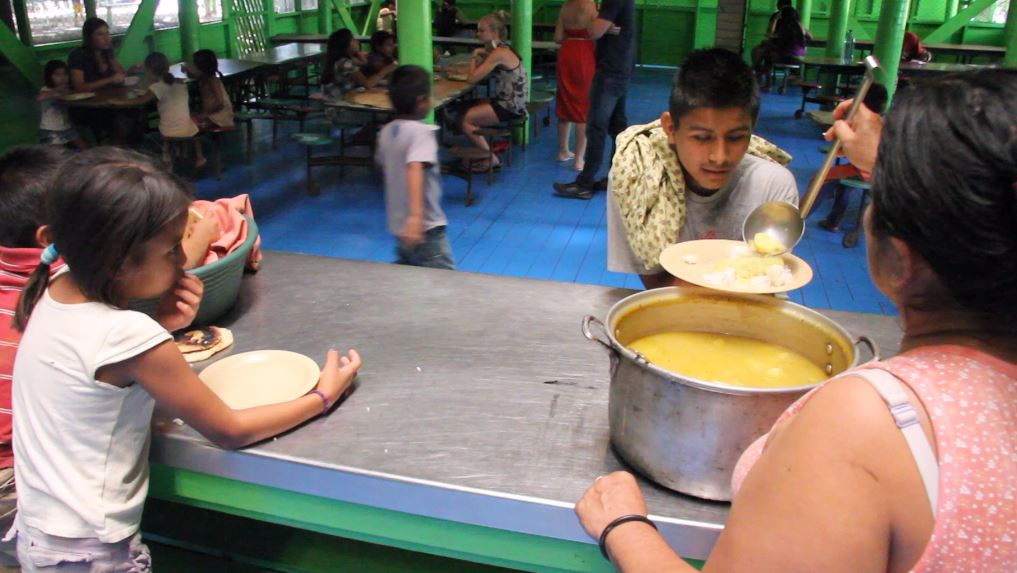
3) CASA GUATEMALA – We’ve been working with this great organization since our first season during a brutal eight-week journey through Central America. When we arrived by river boat to Casa Guatemala by the shores of the Rio Dulce River, it was all worth it. We fell in love with the mission of Casa Guatemala. For decades now, they’ve been educating and caring for orphaned children in Guatemala and helping the struggling families in this rural region of Guatemala. We’ve been blessed ever since that fateful trip. It’s where we met our current cameraman/editor Nate, who was a volunteer at Casa Guatemala at the time we first filmed. Little did we know when we interviewed Nate getting his perspective as a volunteer that he’d one day join our team and go on far-flung trips with us to various corners worldwide. Nate is still with us, and Heather and the team are still doing their good work despite the challenges of Covid and Weather-related issues in 2020. Love these guys. It would be a great place to donate in a loved one’s name as I know the money goes to great use. Here is the link, https://casaguatemala2020.funraise.org
4) HUMANOS 3D / Formerly “Enable Medellin” – You will see these guys featured in early 2021 on Raw Travel – Socially Conscious Colombia, but I first met them in 2019. Despite having lived in Colombia for almost a year, I had no idea it was one of the world’s most land mined countries. The resulting number of missing limbs from kids and adults alike is mind-boggling. Humanos 3D uses cutting-edge, open-sourced technology and a network of volunteers to provide the coolest and most useful prosthetics for FREE to those who need them. You’re going to love this organization when you see them, but if you don’t want to wait until 2021 to help, here is a link to their fundraiser for 2020. I’m sure they can use the help, and I’ve seen first hand the joy brought to the hearts of Colombians who’ve suffered too long from the after-effects of a brutal civil war. Find out more and donate here https://humanos3d.org/en/about-us/
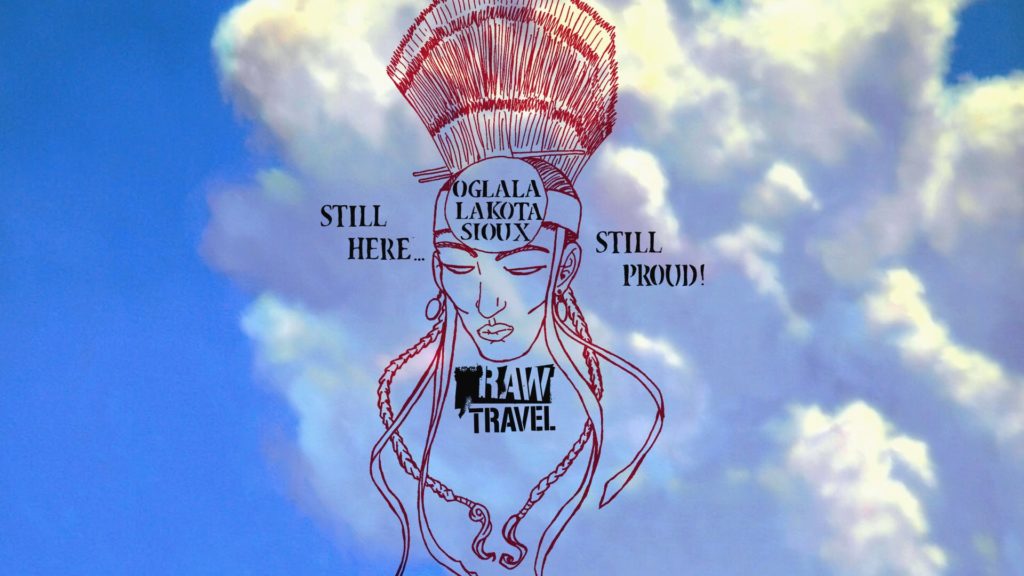
5) RED CLOUD INDIAN SCHOOL IN PINE RIDGE SOUTH DAKOTA: One of my most fulfilling episodes was filmed in the United States at the Pine Ridge Indian Reservation in Pine Ridge, South Dakota in the summer of 2016. Much has been documented about one of the poorest counties in the wealthiest country in the world. The gripping poverty, lack of housing, drug, alcohol, and sexual abuse have led to past epidemics of teen and pre-teen suicides on the Oglala Lakota Sioux Reservation. I was so happy we could show another side of that narrative.
We showcased an all too rare hopeful and optimistic vision of the reservation, which is happening thanks to countless volunteer organizations and the Oglala Lakota Sioux themselves. Red Cloud Indian School has been educating Native children on the reservation for decades. They’ve changed a lot over the years. Now the Lakota language and culture are cherished and taught. They have an excellent track record of sending students to major universities, many in the Ivy League. We raised money for the art program at Red Cloud Indian School when we sold Raw Travel, “Still here, still proud!” T-Shirts designed by a local art student on the reservation back in 2016. Education is the key to allowing proud folks like the Lakota Sioux People to pull themselves up out of the horrific cycle of poverty. Red Cloud Indian School is key to this success. Find out more and donate here. www.RedCloudSchool.org
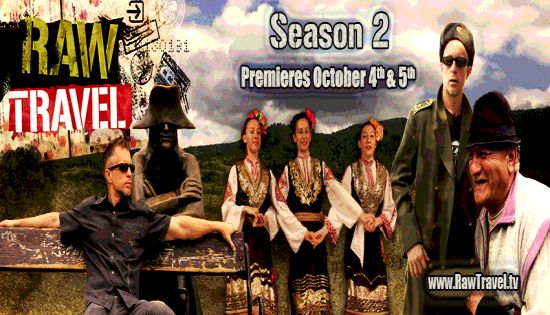
“RAW TRAVEL” SEASON TWO PREMIERES WITH BIG GROWTH SPURT
– Successful Debut Season Leads to Big Growth & Proves Popular Among Variety of Viewers –
NEW YORK, NY: October 1st, 2014 – AIM Tell-A-Vision® Group (AIM TV) announced today that the syndicated television series Raw Travel® will debut its 2nd season this weekend in over 113 cities representing 85% of the U.S. and almost 100 million homes signifying a big growth spurt for the series.
Thanks to a successful debut season that saw the show quickly become one of the most watched authentic travel & lifestyle shows on commercial television, the series added an additional 40 markets to its affiliate list including Washington DC (CW), Cleveland (NBC), San Diego (CW), Dayton (CBS), Baltimore (Fox), Richmond (ABC), and Honolulu (My) among several others.
In addition to over 50% growth in the number of cities served, the show received station and time period upgrades in a variety of markets such as Houston (NBC), Philadelphia (My), Tulsa (Fox), Knoxville (NBC) and more, giving viewers more access to Raw Travel than ever before. Viewers can visit www.RawTravel.tv/wheretowatch for a complete listing of cities, affiliates and time slots.
One of the keys to Raw Travel’s growth was the show’s demonstrated ability to reach traditional broadcast audiences while simultaneously attracting new, young and hard to reach viewers like the sought after 18 to 34 year old demographic and millennials, a rare feat in broadcast television.
Raw Travel’s upcoming fall episodes will showcase authentic and alternative sides of popular destinations such as such as Krakow, Poland; Prague, Czech Republic; Vienna, Austria; Budapest, Hungary and Brooklyn, NYC. The show will also continue its specialty of shining the spotlight on less traveled, more “raw” and off-the-beaten-path destinations like Slovakia, Serbia, Romania & Bulgaria. While filming Executive Producer & Host, Robert G. Rose, and crew traveled like typical budget travelers, and continued their theme that travel is not just for the wealthy or famous, travel is for everyone.
“Raw Travel’s touchstones of respectful and authentic travel combined with adventure sports, underground music, social responsibility and environmental sustainability really connected with viewers, especially young people, many of whom seem to share my personal and idealistic view of the world. We’re helping shred the myth that young viewers won’t tune in to broadcast programming.” Rose says. “I couldn’t be more humbled and inspired from the reaction of passionate viewers of all ages. Besides, my mom says Raw Travel is ‘awesome’, so there you go.” Rose continues.
Raw Travel’s Season Two spring episodes will also feature treks to burgeoning travel locations in Southeast Asia and North American destinations such as Utah, Louisiana Cajun Country and more.
Raw Travel is an adventure travel & lifestyle series showcasing the rapidly growing wave of socially and environmentally aware, independent travel. The series weaves together themes of ecotourism, voluntourism (giving back) with underground music and authentic culture in a way unique to U.S. television. More information can be found at www.RawTravel.tv and viewers can visit www.RawTravelTrailer.com for a short video preview of the upcoming episodes from the fall episodes.
# # #
ABOUT AIM TELL-A-VISION GROUP
AIM TV is an independent content, production and distribution company founded by media executive and entrepreneur Robert G. Rose. AIM TV aspires to produce and distribute positive, compelling content that reflects its mission of presenting Media That Matters. Visit www.AIMTVGroup.com and www.RawTravel.tv for more information.

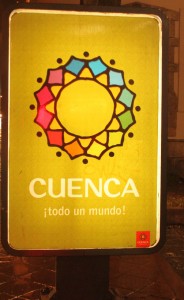
Cuenca is Ecuador’s 3rd largest city with around 500,000 residents. A lot of foreigners retire here because you don’t need a car (taxis are cheap), the weather is temperate (warmer than Quito but not as warm as Guayaquil) and it’ a cleaner city than most in Ecuador. In fact this historic town has a pretty impressive recycling program with a company called EMAC working in partnership with the local government.
While we were in town, EMAC was throwing a little celebration and had information booths set up in one of the main plazas. After our conversation in Baños with the guys from La Casa Verde, we were even more curious about recycling and environmental conservation efforts in Ecuador, so we interviewed the President and a few key staff of EMAC who filled us in.
Through the event they were hoping to provide education about recycling efforts in Cuenca, fully aware that without the residents’ cooperation, their best efforts would be futile. I was pleased to hear that plastic bottles were recyclable in Cuenca. We had been drinking a lot of bottled water and I was feeling a tad guilty. I had been trying to figure out another solution to drinking clean, potable water while on the road.
Later we took some footage of the wonderful, Colonial sites and historical architecture along Cuenca’s cobblestone streets.
Then we headed over to the PumaPungo Museum to see the impressive Inca Ruins, the only ones I’ve witnessed inside the city limits of a major city. The site had been partially restored by the museum and is definitely worth a visit if you find yourself in Cuenca.
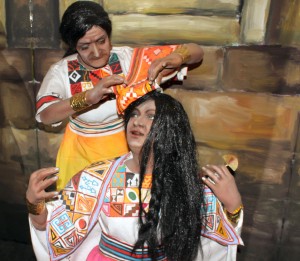
Our guide, Pablo, spoke English and filled me in on the fascinating culture and history of the Pre-Inca and Inca civilization. This particular site was where the Inca Princesses lived and had 11 servants each (all male). The garden was reproduced to look exactly like the Garden might have looked back in the Inca days with over 400 different species of plants.
Much of the food raised went to the birds in the sanctuary the museum runs where they rescue birds that have been injured or are retrieved by the police from people who try to illegally export these rare birds as illegal pets to places like the U.S. and Europe.
Later we visited the museum’s impressive archeology section which displayed some of the items recovered from the site.
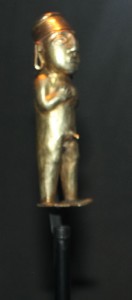
We also saw their exhibit of shrunken heads. They gave me a DVD on them and I can’t wait to hear and see more about this fascinating practice which was just outlawed on humans in Ecuador in the 1960s!
After the museum we headed over to the Panamanian Hat Factory and Store, Homero Ortega. Most people don’t realize the ubiquitous and famous Panama hat actually originated in Ecuador. It got its confusing and misleading moniker during the building of the Panama Canal when then U.S. President Teddy Roosevelt wore one while visiting the canal and its popularity soared.
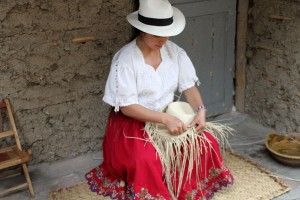
Even though the hat originates in Ecuador (Montecristo and Cuenca) people still confuse the hat with Panama, the port where the hat was exported back in the day and the name has stuck.
Cuenca has a large number of people who depend on the Panama Hat industry as they normally weave in their homes and then bring the hats to the Homero Ortega Company to be finished. The process is pretty cool to see first hand, which you can do at the factory. It can take as little as 2 days for some hats that might retail at $20 or as much as 6-8 months for hats that might retail as much as $1,000-$1,500 U.S. The difference is the quality of the weaving, as the more expensive hats have a more fine straw material which takes a long time to weave and requires more material.
Alicia Ortega S. is the founder’s granddaughter and current President of the company and she and her staff could not have been more gracious to us. They even gave us each a Panama hat as a souvenir. Incredible generosity and a great segment for the show.
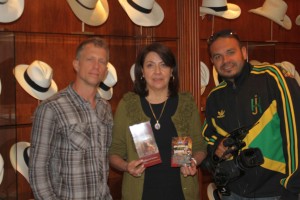
After that we pretty much called it a wrap. But I had one more shoot I wanted to do so I went along to this Gothic store called “Godos” close to our hotel to get a little info n the punk/metal and gothic scene in Cuenca for my side project “Punktology”.
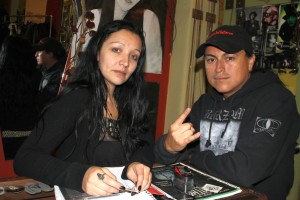
The owner’s were super cool. They let me have free run of the place and filled me in on the local metal and goth scene. In Cuenca it is really big it turns out which also helps explain all the teens and kids I saw running around town wearing black.
Cuenca is a really cool town. It’s big enough to have most of what you might want (it has an international airport) yet small enough that traffic and getting around isn’t an issue and it felt safe, even at night, in the old town. Of Course all the old precautions should be followed anywhere when traveling (don’t walk alone at night; don’t wear expensive jewelry, etc.). But all in all, I heartily recommend Cuenca as a safe, friendly and interesting destination.
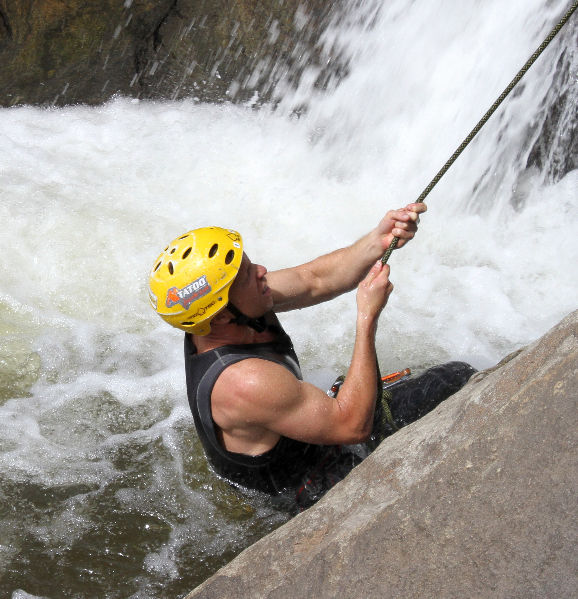
In Baños we stayed at the eco-friendly hostel, La Casa Verde (The Green House) owned by a lovely Australian/New Zealand couple Doug & Rebecca ho live there along with their adorable 4 year old son Jonathon. It’s hard to say enough about La Casa Verde and the good work they are doing. A few years ago I might have ignorantly referred to Doug and Rebecca as tree huggers or hippies, but now, the more enlightened version of myself is thankful for what they are doing.
At a time when being “green” is more marketing term than an actual way of conducting business, La Casa Verde more than lives up to its name. Despite the higher cost, La Casa Verde was constructed with wood from a nearby tree forest (trees that are planted and harvested in controlled conditions and grow very quickly) as well as recycled materials. They grow and maintain their own organic and sustainable garden which provides much of the food for guests. By foregoing pesticides they happily allocate 10% or so for the birds and insects (call it nature’s tax) and share their bounty with their Ecuadorian neighbors.
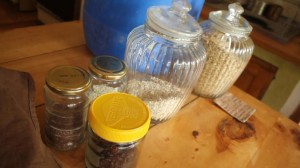
When they do find it necessary to purchase food in town, they insist on bringing their own reusable containers (no paper or plastic thank you) and buy in bulk. So that guests don’t have to buy plastic bottles (which are not recycled in Baños ) of water, they provide free purified water in the kitchen. They built their own septic tank (very unusual in Latin America) and separate the black (sewage) from the grey water (shower, sink) which is reused in the organic garden. Not to mention the shower water is hot, the breakfast delicious and healthy and Rebecca makes some incredible, all natural brownies and granola bars that still has my taste buds going through withdrawals.
Indeed there is something about Baños that brings out the inner hippie in everyone. I suddenly wanted to go for a bike ride (something I probably haven’t done in over 10 years). We took the 28 KM (17 miles) or so tour of the lovely Rio Verde (Green River) via the Ruta Cascada (Cascade Route), an amazing bike route where you can view incredible waterfall after incredible waterfall throughout an ideal scenic landscape of green mountains and deep valleys.
Now we were assured (accurately as it turned out) that most of the bike route was downhill. This was important because we were each carrying some type of expensive and not so easy to balance camera equipment on our backs. You can imagine how surprised we were when we were struggling almost right off the bat to get up a never ending, ridiculously steep hill. Turns out this was no little hill but the local (and very active) Tungurahua Volcano, which is just a mere 16,000 feet in height!
We had misread the map and taken a very wrong turn. Finally after about 20 minutes of breathlessly walking our bikes uphill on the side of the road and erroneously thinking the plateau must be near, a kind soul in a pickup truck took pity and told us our mistake. We were able to correct course and the rest of the bike trip seemed like a breeze afterwards.
Once back on course, the bike ride was absolutely amazing, incredible or whatever cliched adjective you care to insert. But dare I say (can’t believe I’m saying this) that for me it was the highlight of the entire trip. We stopped along the way to take a basket ride over an incredible (that word again!) ravine to view one of the (I won’t say incredible) waterfalls up close and personal. The baskets are like uncovered cable cars and are more than a simple tourist draw. They are a very practical means of transport for people who live across a steep valley or on top of a mountainous terrain.
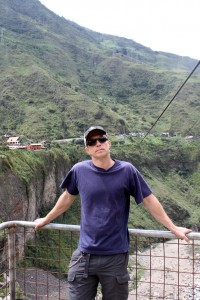
To further prove that Baños does something strange to you, I stopped to bungee jump off a bridge, something I’ve never attempted or cared to attempt before. Do you even attempt bungee jumping? You either succeed or fail right? I meant there are not many “do overs” in this “sport”. This hit home when the guy started outfitting me with gear.
I realized no releases were being signed, no legal disclaimers were being spouted and how unofficial everything was looking and I started to get really nervous. Who is this guy and how do I know this isn’t his first day on the job? Will it be hard to get my corpse back to the U.S.? Do I want to be buried in New York, Tennessee or California? Maybe in Ecuador? Or at sea? or just throw me in the volcano? Did I remember to donate my organs? Will Social Distortion play at my funeral?
By the time I was standing on the side of the bridge ready to dive headfirst into the rocky terrain below I was in full panic mode. But I felt it impossible to back out because a small crowd had gathered to watch the scared Gringo; no doubt baited by the TV cameras recording my first ever jump (failed jumps are great for ratings I hear).
I vowed not to make a sound but am afraid I ended up screaming, if not quite like a little girl, like a scared man who was about to lose his life in a very stupid way. It was instinctual, primitive and over in a split second. And when it was over, I was swinging to and fro, slowly being lowered to the ground below and it was really no big deal. I’d easily do it again, but I might check the credentials of the personnel first.
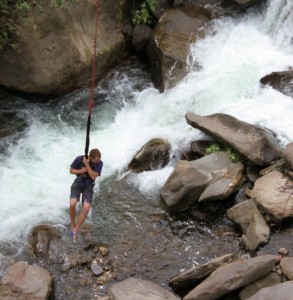
The bike tour was capped off by a stop at the Pailon del Diablo falls, the most miraculous and powerful falls I’ve ever seen so close up. We all got a little wet from the powerful spray and we were exhausted at this point so we bussed it back (hey, don’t judge! most people do) to La Casa Verde.
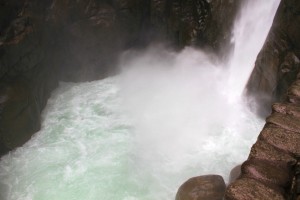
Later that night we tried our luck at spotting the Tungurahua Volcano’s lava flow. We hired a taxi who took us to the top of the mountain (the very same one we had ignorantly attempted to climb on our bikes earlier in the day) to one of the volcano observations stations high, high up.
It was dark and cold and it felt eerie being this close to an active volcano that could blow at any moment. But alas it was too cloudy for observation. We gave up after about 20 minutes and went home. If we’d have hung in there all night we would have probably eventually seen something like the photo below.
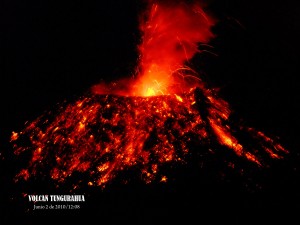
The next day our outdoor adventure continued. My producer talked me into trying a thing called Canyoning, which is really rappelling down a slick water fall. It was pretty cool. I’m not sure my instructor was old enough to drive, much less guide a clumsy beginner in a dangerous sport, but I’m alive so he guess he did ok.
To be honest the scariest part of canyoning seemed to be climbing to the top where one wrong move and your could fall on a pile of rocks and the flimsy little helmet would probably be of no use.
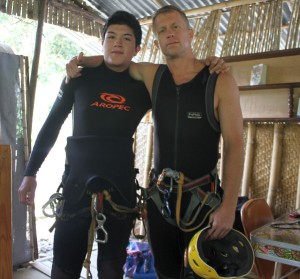
Finally we took a break from all this adrenaline and took advantage of what Baños is so aptly named for; it’s naturally occurring, volcano heated thermal spring pools. There are dozens all over Baños but I soaked in the one right smack in the middle of town, the popular Banos de la Virgen. I wasn’t alone. It was a weekend and the place was packed with Ecuadorian families enjoying the cheap entertainment of the pools.
With my pale, decidedly un-suntanned body I stood out in the brown crowd as the only Gringo in the pools. Where were all the Gringo tourist I had seen in town the night before? Probably out biking, bungee jumping, rafting or cascading.
Baños is a town I thoroughly enjoyed. It was economical (taxi rides from our hotel to the center of town, $1.50 U.S.) , full of great outdoor activities and had a little nightlife as well. It was cultural with the indigenous residents mixing in with the tourist quiet naturally. There are vegetarian restaurants and spa and massage services for those who prefer a more laid back experience.
But if you go, remember to wear your mosquito repellent. I had been lulled into a false sense of “we don’t need no stinking repellent” in Quito and as a result got eaten alive for the two days I was in Baños . You could almost hear the little critters singing over and over “Gringo Blood… ummmmmm.. delicioso” as they went to town on my arms, legs and neck.
Despite the incredible natural beauty of Baños and really all of Ecuador, it ain’t easy being green there just yet. Thanks to the efforts of many eco-conscious travelers, transplants like Doug and Rebecca at La Casa Verde and the numerous locals who obviously care about the future of Ecuador, hopefully this will begin to change over the next decade before it’s too late.
Baños, you get a big, if a bit mosquito ravaged, two thumbs up from me! Keep keeping it fun and please for God’s sake, keep it green.
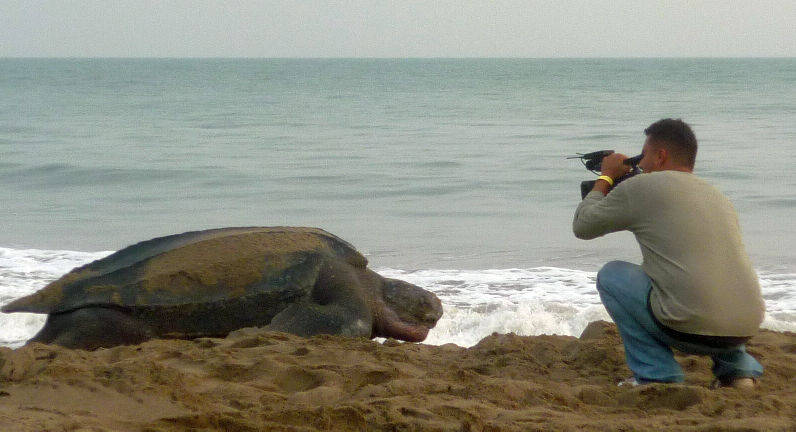
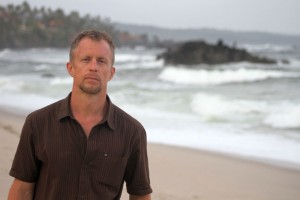
Our “wrong-side-of-the-road” driving adventure continued as we made our way to Grande Riviere, a remote beach haven on the north coast of Trinidad. Grand Riviere is accessible by car through miles of very narrow and windy roads via the northeast of the island. However, the drive along the east and north coast is one of the most beautiful I’ve ever experienced with remote beaches and charming little villages all along the way.
We stopped several times and as a result arrived in Grande Riviere after it was already dark, admittedly not an ideal situation for navigating the unmarked road, narrow switchbacks and unpredictable terrain.
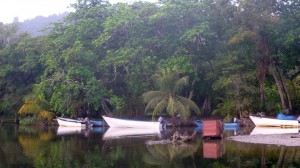
As a tourist destination, there is not that much to the town of Grande Riviere. It’s a small fishing village like so many others but with one distinct advantage, it’s a prime spot for watching the endangered Leatherback Sea Turtles lay their eggs. With a couple of hotels strategically located right on the beach, during the turtle watching season (March-September) you can literally walk a few feet to the beach and see them doing their ancient business first hand.
During the season, the beach area is protected at night, which is when the turtles come ashore to nests, so you can only access the beach with official permits (easily purchased at the small Visitor Center close by) and under the guidance of a trained guide. The tour itself is relatively inexpensive and very informative.
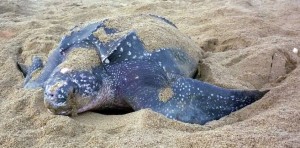
Trinidad is one of the most important Leatherback Sea Turtle nesting sights in the world and at peak season, Grande Riviere can have up to 300 nesting leatherbacks in a single night. On the night we were there, there were probably around 50. Adults can weigh up to 2,000 lbs. and only the females come to land. They always return to the same beach where they themselves were born. While on the beach the female digs an egg chamber a few feet deep with her flippers and can lay up to 100 eggs.
After slipping into a slight trance while laying her eggs , she covers the chamber with sand and smooths it over to disguise the area from predators and returns to the sea. She may return up to 8 times a season to lay eggs.
The leatherbacks’ numbers have declined over the years for a variety of reasons including loss of habitat and people taking advantage of the slow moving creatures by using either their eggs or the turtles themselves as food.
Indeed the night we were there we saw a turtle that had obviously been injured, probably the result of a boat propeller cutting an ugly gash in it’s shell. At least this one survived.
Our guide regaled with tales of other turtles missing fins, as people would cut off parts of a live turtle to use as food. He also said there had been instances of people actually piggy back riding the turtles when they come ashore, interrupting their nesting patterns.
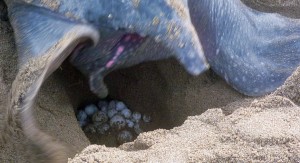
Most likely only one or two out of a thousand eggs will survive their natural predators. The beach was full of eggs that had been dug up by local dogs and sucked dry.
Now, Ill be the first to admit that watching a turtle sounded as exciting to me as watching paint dry, but surprisingly, it was the coolest experience of the entire trip.
Watching these endangered, pre-historic animals haul their immense girth from God knows where in the deep, to lay dozens of eggs deep in the sandy beach is nothing short of amazing. The turtles are on a mission that is ingrained in their tiny brains, to lay as many eggs, as deeply in the sand as possible and to keep perpetuating the species. They use their fins, which serve them so well in the ocean, to struggle onto shore and clumsily maneuver themselves on land. Then they use their tail and fins to burrow their back end as far as possible before they fall into a trance and lay the eggs.
At night, flash photography and flashlights are prohibited as the turtles are very sensitive to light and this would interrupt the nesting. So we were restricted to the guide’s infrared red light for visibility. We were not allowed to touch or disturb the turtles in any way, until they fell into their egg laying trance, at which point we were told it was OK to touch them. It felt like you’d expect a shelled reptile to feel, hard and prehistoric, not warm and fuzzy at all.
We had heard that if we were industrious enough to rise just before sunrise we might be lucky and spot some of the laggards who had arrived late in the night (early in the morning) and would be finishing up their business before heading out to sea.
As much as I’m not an early riser, we are used to sleep deprivation on these shoots so we set our alarm for 5AM and hit jackpot. When the dawn arrived there were still half a dozen or so leatherbacks on the beach finishing up their tasks.
One mama turtle got disoriented and ended up in the bay rather than the ocean. We were able to eventually help guide her out to sea.
All in all the leatherback turtle watching is a pretty awesome thing to experience. I hope as sustainable tourism continues to take hold in Trinidad that their numbers will continue to rebound. If you want to learn more about saving the leatherback turtles and how you can help, check out the fine folks at the Turtle Village Trust.
We left Grande Riviere and headed back to Port of Spain but not before stopping off in Arima to visit the AmerIndian Museuem, which is in a reproduction of a long house used by indigenous communities centuries ago. The AmerIndian community in Arima is the last vestige of a shrinking organized community of people with indigenous roots on the island. We were led on a tour of the museum by Ricardo, the current Chief, who maintains the museum and also conveniently lives next door.
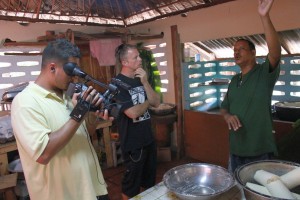
With all of the different ethnic influences in Trinidad (East Indian, African, Asian, Middle Eastern, Venezuelan, etc.), it’s easy to forget that the island was once inhabited entirely by indigenous tribes. But as Ricardo said, evidence of their influence is everywhere from the names of roads and towns, to the way food is cooked. Arima is only a few kilometers from Port of Spain and easily and economically accessible by “Maxi Taxi”, a small shuttle bus. Entrance to the museum is free, though a small donation is asked for and appropriate.
